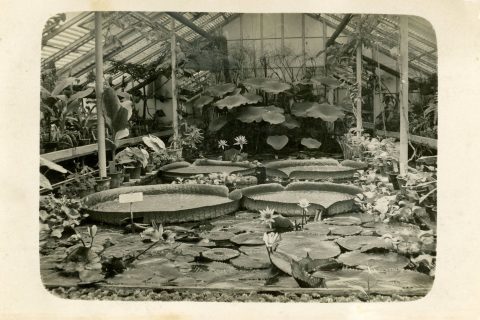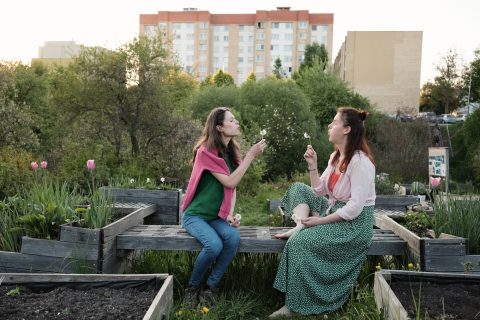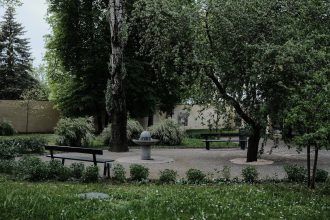Collective gardens are distinctive and contrasting spaces that still attract those, who are interested in architecture and those who like alternative urban lifestyle scenarios unfolding on the urban fringes. Not many people know that Kaunas is one of the hotbeds of the motley phenomenon of collective gardening in Lithuania. It has also been notorious for its shady ventures. But let’s start from the beginning and if you want more details, you will be able to find them in my upcoming monograph. Because when you touch upon the subject of collective gardens, new and inexhaustible stories begin to unfold.
After the war, as famine struck across the Soviet Union, urban gardening was promoted as a way for people to get their own food. Vacant areas in the cities were set aside for vegetable cultivation and the population was encouraged to get involved as much as possible. At the same time, Stalin embarked on the “Great Transformation of Nature”, an ambitious plan to build dams, hydroelectric power stations, canals, and drainage systems across the USSR to prevent droughts and raise agricultural productivity. Following the ideas of Trofim Lysenko, a charlatan who claimed to be a follower of the plant breeder Ivan Michurin, and “Marxist biology” people believed in the possibility of an agricultural revolution, and so not only grandiose constructions were undertaken, but also the experimentation of amateur naturalists was promoted, clubs were founded, and the ideas of Michurin were disseminated.
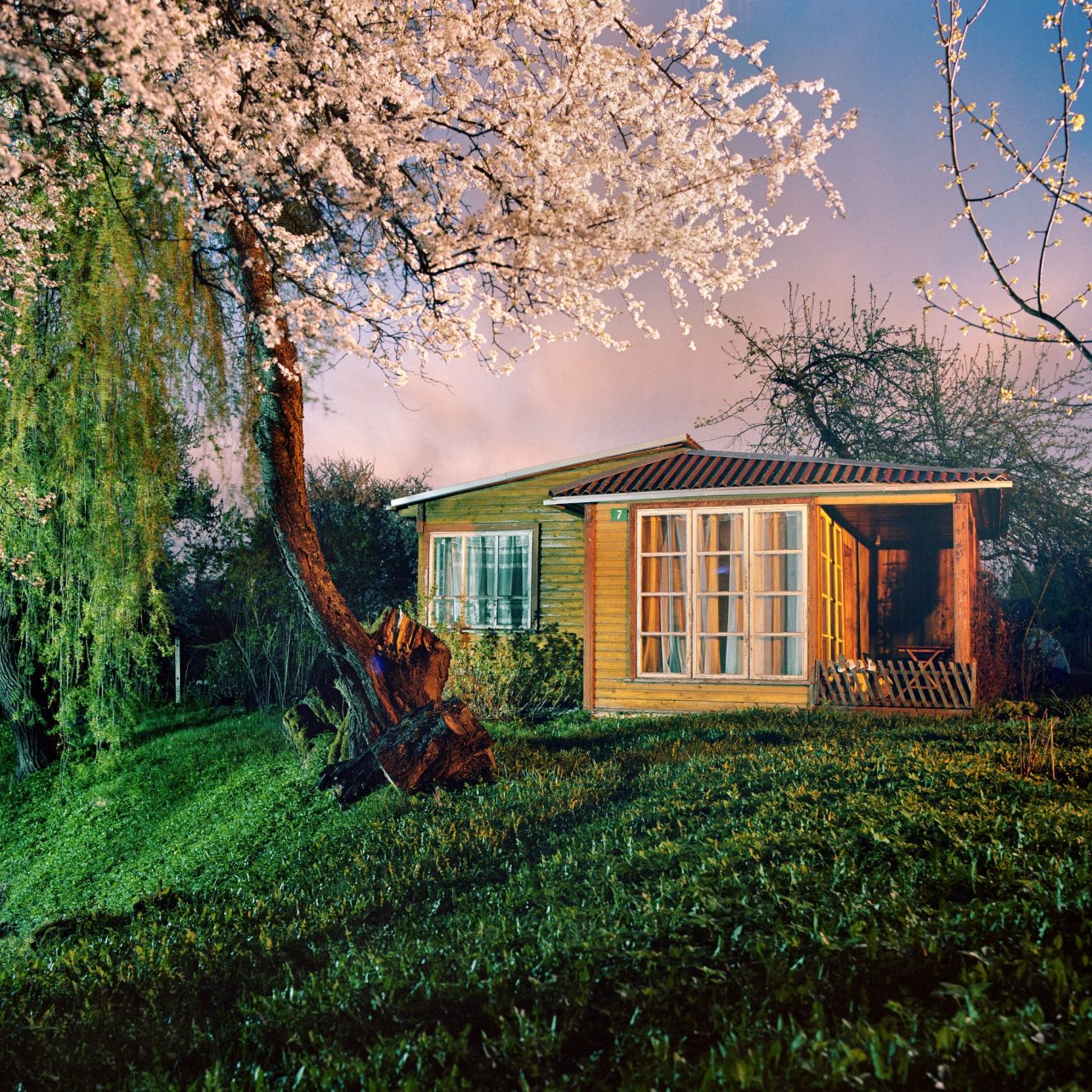
In 1949, instructions came from Moscow to actively develop amateur gardening and horticulture in the republics. Although this was not the first decision on collective gardening, it could be considered the beginning of the mass development of collective gardening in the Soviet Union. A resolution set a limit on the largest possible garden plot (up to 6 acres in the city and up to 12 acres outside the city) that did not change for many years. A call was issued for the sale of public transport and train tickets so that people could go to the gardens and vegetable patches. The authorities also wanted to ensure the feasibility of getting seeds and seedlings. In Lithuania, in the same year, 1949, ‘amateur gardens’ began to be established. An area of 6 hectares in Kaunas, next to what is now called K. Baršausko Street, was being maintained by the workers of Julius Janonis paper factory. There is very little information about this case, but it is known that one of the first – possibly the very first – chairmen mentioned in the Society’s reports was a citizen named Berachožas and that the gardeners were located next to the garden park of the Four Communards, which they maintained themselves. The total area of the garden plots may have been around 3 hectares, but the area together with the remaining fragments of the defensive elements of the Kaunas Fortress nearby, was twice as large. Albeit having changed a lot, the gardens have survived to this day.
Vilnius I. Mičurinas Horticultural Society was founded only in 1953. It was the first official organization directly related to creating collective gardens. I. Mičiurinas Society could be considered the beginning of the Lithuanian Horticultural Society (LHS). However, later, the Soviet era press avoided the name Michurin, and the Lithuanian Horticultural Society founded in 1959 is often considered the first horticultural organization. Kaunas, as the birthplace of collective gardening in Lithuania, was hardly mentioned at the time. The topic of ‘Michurists’ was probably avoided due to the changes in politics – after Stalin’s death, Lysenko’s influence gradually waned and his ideas were finally rejected by the scientific community.
With political power concentrated in Vilnius, Kaunas was for many years on the periphery of the official narrative of Lithuanian collective gardens, but it did not lose its importance. Kaunas residents did not start official amateur activities until 1957 (when the statutes of the Kaunas Horticultural Society were adopted). However, as early as 1963, there were complaints that a large part of the LHS Central Board was from Kaunas and did not maintain contact with other chapters. The interests of amateurs and producers were also different in the organization, with their representatives concentrated in Vilnius and Kaunas respectively. Kaunas had a strong core of horticultural specialists, with the Vytėnai Horticulture and Gardening Testing Station and the Lithuanian Academy of Agriculture. Tadas Ivanauskas was often invited to participate in public horticulturalists’ events. Jonas Kriaučiūnas, the first chairman of the Lithuanian Horticultural Society and editor of the magazine Mūsų sodai, also worked at the Vytėnai Horticulture and Gardening Testing Station until 1953. Even the documents on the activities of the horticulturalists show that the central board of the established LHS was based in Vilnius, but the board sections were increasingly dominated by Kaunas residents. The tensions at the organizational level and the different approaches of Kaunas and Vilnius horticulturalists were felt for decades.
Tensions in collective gardens were equally present in the field of construction. From the very first gardens, tool sheds, then summer houses, were built, with the authorities trying to control their construction, while the townspeople played with the changing legal framework, trying to build a second home that was impossible in other areas. Individual construction was banned in the cities, so there were hardly any other spaces where you could build even a small structure with your own hands. The gardens became a place of informal practice, where illegally obtained building materials were hauled in, houses were built larger than allowed, and some were even rented out for recreation. The Kaunas residents have excelled in this area too. So much so, that the news of their ventures sometimes reached the Council of Ministers and the corridors of institutions in Moscow.
The topic of garden house construction and suitable designs was mentioned in the horticulturalists’ press and during congresses since the formation of the LHS, but it was not easy to convince the authorities to allow construction. In Vilnius, gardeners were encouraged to build semi-detached, boarding-house-type houses, and around 1960, the Kaunas City Executive Committee banned pavilions, caretakers’ buildings, and tool sheds in collective gardens. Subsequently, construction was allowed, but periodic restrictions and inspections were imposed. The controls did not stop the gardeners. Buildings continued to spring up in the gardens like mushrooms after rain. The documents of the 7th LHS Congress that took place in 1975, contain a reminder that the Council of Ministers had recently banned not only the construction of individual (not semi-detached) houses and stopped the allocation of new land for collective gardens but could also proceed with the liquidation of individual gardens if the violations continued. The collective gardens in Vilnius and Kaunas were the most affected at the time.
As soon as the construction of non-semi-detached houses was banned boarding house-type projects appeared in the press. The first boarding house-type garden house complex was built near the Kaunas Lagoon. The Marios collective garden was called an experimental one and the design of the garden layout was prepared by the Kaunas Institute of Construction and Architecture (architect K. Kurševičius). The layout contains an elongated communal area in the center of the gardens, with groups of semi-detached houses flanked on two sides by garden plots separated from the houses and devoted exclusively to gardening. The principle of placing the garden houses separately from the garden plots was not new. The array of the Kaunas District Department of State Institutions collective gardens, which had this type of layout, was described in 1969. Only the houses were not put together in large groups but were built individually or in pairs.
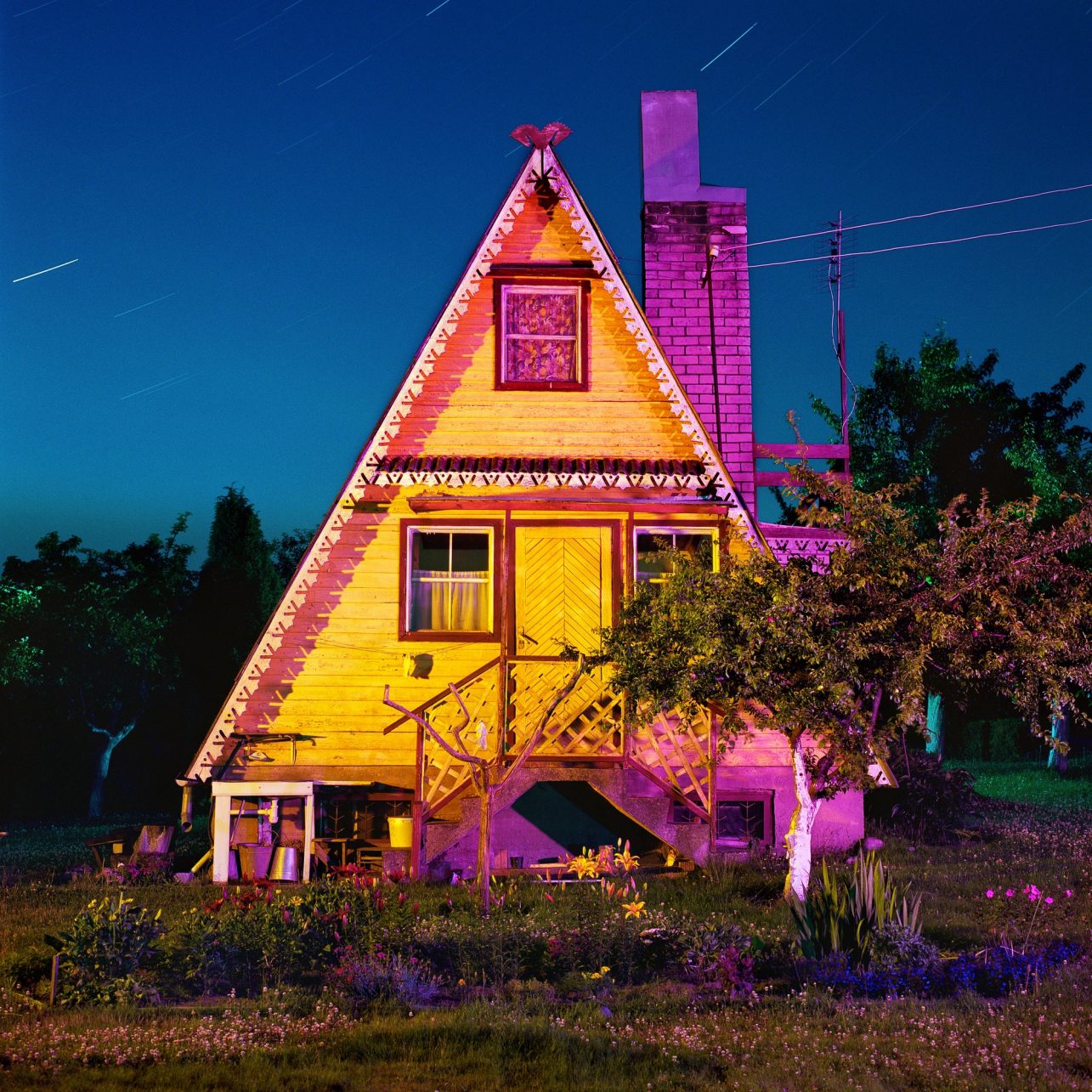
How did Kaunas gardeners manage to comply with the strict construction restrictions? It wasn’t easy. A meeting of the Central Committee of the Communist Party of Lithuania that took place on May 22, 1973, examined the problems discovered during the 1971 – 1972 inspection of the order in the gardens by a special commission. 60 garden complexes in the cities of Vilnius, Kaunas, Druskininkai, and Klaipėda were inspected. The records of the Central Committee of the Communist Party’s meeting mention that the People’s Control found 4 cases related to the acquisition of materials and use of official position in the second section of the collective garden of the Ministry of Agriculture. For example, the Chairman of the Republican Committee of the Trade Union of Agricultural Workers, I. Gabalis, obtained the materials and machinery for the construction of his garden house in Vilnius from Kaunas. And all of this was taken care of by Kaunas Land-Reclamation Construction Trust. A lot of attention has been paid to irregularities found in Kaunas as well. Following the inspections, various superiors have been dismissed and some houses may have been repossessed.
In Kaunas, it was also discovered that some high-ranking executives are building summer houses (dacha) rather than garden houses and are not even building in areas designated for collective gardens, but in nearby scenic spots. Although the construction of summer houses was officially banned in Lithuania as early as 1961, it seems that in Kaunas it did not only continue but was even allowed by the Kaunas Executive Committee. For example, the chief engineer of the production and technological equipment department of Kaunas First Construction Trust, who was eventually dismissed from his post, built a three-room summer house (42.3 square meters) with state-owned materials, even though “he has a four-room apartment in the city.” Even if the structure had been built as a garden house, it would still have been considerably larger than the 25 square meter limit in force at the time. The head of the Industrial Construction Design Institute group and the store manager of the Kaunas artificial fiber factory had built summer houses nearby. And the head of the production department of Raidė printing house had also built a two-story residential house in the collective garden under the guise of building a garden house.
There were also more culturally motivated architectural adventures in the gardens. Architect Feliksas Bielinskis built a small log barn in his garden in Kaunas in 1979, which he obtained from a collective farm, and later some of his neighbors followed suit. Bielinskis also wrote in the horticulturalists’ press about the idea of using old rural buildings that were not needed by the collective farms and thus preserving the heritage of wooden architecture. He also urged the authorities to pay attention to the possibilities of using ethnographic architecture in the gardens. The collective garden Banga of Construction and Architecture Institute – where Bielinskis’ barn ended up – also contained many examples of modern garden houses of the original architecture, and unexpected aesthetic, and technological experiments.
It was not only in construction that gardeners were not lacking in ingenuity; some gardens became an additional source of income. The authorities combated this by inspecting and punishing the most audacious ones. For example, the report of the audit committee presented at the 6th LHS Congress in 1971 stated that some beekeepers’ units had been found to have shortages of goods or cases of buying up flowers from people other than members of LHS. Panevėžys residents allegedly bought goods from collective farms and private individuals, took a 40% commission, and resold them in their own shop, even selling eggs and wine. In Šiauliai, the beekeepers’ department started producing amber souvenirs, in Kaunas the beekeepers grew cucumbers, carried out “experiments for commercial purposes”, etc. Thus, gardeners at all levels of activity and in the most varied forms, not even necessarily directly related to gardening, sought personal gain.
The inspections in 1961 and 1972 – 1973 were far from the last. In 1981, gardeners were disciplined again. Historian Vytautas Tininis called the event “The garden house case.” According to Tininis, this was perhaps the most prominent attempt by the First Secretary of the Lithuanian Communist Party’s Central Committee Petras Griškevičius to crack down on high-ranking nomenclaturists. The wave of sanctions again led to restrictions on the construction of garden houses in Lithuania in 1982 and throughout the Soviet Union in 1984. We can find the introduction of new restrictions in the proceedings of the Communist Party’s Central Committee’s meetings. Unlike in 1973, the focus here was on specific people and it was directed at violations recorded in and around Vilnius, especially in the Beržas collective gardens of Vilnius District Executive Committee, where a number of nomenclature figures were gardening.
Did that mean there were fewer construction violations in the gardens around Kaunas? Probably not. New gardening communities continued to actively sprout there. Picturesque areas were allocated for them near the Kaunas Lagoon and in other parts of the city, and resourceful Kaunas residents continued to take advantage of the loopholes in the law that allowed them to go beyond living in a standard apartment block. Throughout Lithuania, garden houses were used as a substitute for a second home, a status symbol, or simply a family summer house. After the restoration of independence in 1991, the building of private houses or reconstructing the garden ones into residential ones was allowed in the collective gardens. This phase brought another wave of construction to the Gardens. Gardeners, who had been disciplined for years, were finally able to do what they always wanted in their plots since the beginning of collective gardening. And that was – to build what they want and not what decrees coming from Moscow allow them.

